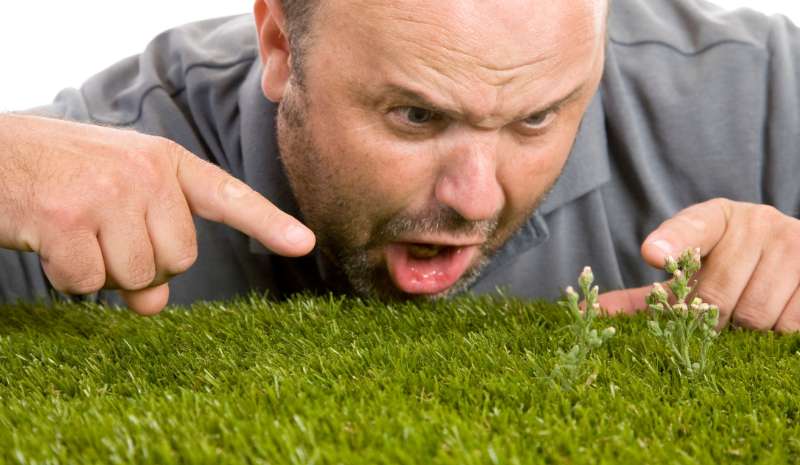Maintaining a lush, green lawn or garden requires careful planning, especially when it comes to the timing of weed control and fertilization. These two essential tasks are best when performed in harmony, but their order of application can impact their effectiveness. Many people ask, "Should I fertilize before or after applying weed control?" The answer depends on the type of weed control being used and how it interacts with fertilizers. In this article, we will explore the optimal timing for fertilizing and using weed control to ensure a beautiful, healthy lawn or garden.
Introduction: The Importance of Timing
The timing of applying weed control and fertilizer plays a significant role in the success of your lawn care efforts. Fertilizing too early can stimulate weed growth, making it harder to control them. On the other hand, fertilizing too late could interfere with the effectiveness of weed control products. Proper timing ensures that you give both the herbicides and fertilizers the best chance to work.
This guide will help you understand when to fertilize in relation to weed control, whether you're using pre-emergent or post-emergent herbicides.
Understanding Weed Control Methods
Before deciding when to apply fertilizer, it's crucial to understand the two main types of weed control methods: pre-emergent herbicides and post-emergent herbicides.
Pre-Emergent Herbicides
Pre-emergent herbicides are applied before weeds even begin to grow. They work by preventing weed seeds from germinating, creating a barrier in the soil that stops weeds from sprouting. Because pre-emergent herbicides form a protective layer on the soil surface, applying fertilizer too soon after these herbicides can disrupt their effectiveness. Fertilizer may wash away or break down the protective layer, allowing weeds to germinate.
Post-Emergent Herbicides
Post-emergent herbicides target weeds that have already sprouted and are actively growing. These herbicides work by being absorbed into the plant, usually through the leaves or roots, and interfering with the weed's growth processes. While these herbicides are more effective when applied directly to weeds, applying fertilizer too soon afterward can cause the weeds to grow faster, making it harder for the herbicide to take effect.
Fertilization Basics: Why Timing Matters
Fertilizing is essential for promoting healthy plant growth. However, its timing in relation to weed control matters. Fertilizing too early can promote the growth of weeds, while fertilizing too late might reduce the effectiveness of the herbicides.
The Risk of Fertilizing Too Early
Applying fertilizer before using weed control can stimulate the growth of weeds. Fertilizers provide the nutrients that plants need to grow, and this can cause weeds to flourish as well. Fertilizing before applying weed control allows weeds to grow faster and stronger, which can make herbicides less effective. Additionally, the herbicide may not have time to properly absorb into the weeds, diminishing its impact.
Waiting Periods Between Weed Control and Fertilizer
When applying weed control, you must allow enough time for the herbicide to work before fertilizing. For post-emergent herbicides, it's recommended to wait at least 1-2 weeks before applying fertilizer. This waiting period ensures that the herbicide has been absorbed by the weeds and is working effectively.
For pre-emergent herbicides, it's crucial to wait longer—typically 4-6 weeks—before applying fertilizer. Fertilizing too soon after a pre-emergent herbicide can disrupt the layer formed in the soil, making the herbicide less effective at preventing weed seeds from germinating.
Fertilizing After Post-Emergent Herbicide
When using post-emergent herbicides, timing your fertilization properly is important to avoid interfering with the herbicide’s ability to target and kill the weeds.
Best Practices for Post-Emergent Fertilization
When applying a post-emergent herbicide, it’s crucial to allow at least 1-2 weeks before fertilizing your lawn or garden. This waiting period allows the herbicide to be absorbed by the plants, ensuring that it effectively kills the weeds. After this time, you can safely apply fertilizer to encourage the growth of your healthy plants.
It's also important to consider the weather conditions. If it rains shortly after applying the herbicide, wait a few extra days before applying fertilizer. Rainwater may wash away the herbicide before it has been fully absorbed by the weeds, and you may need to reapply it before fertilizing.
Fertilizing After Pre-Emergent Herbicide
Pre-emergent herbicides are typically applied in early spring or fall, before weed seeds have the chance to germinate. These products are highly effective in preventing weeds, but they require more patience when it comes to fertilization.
When to Wait Longer (4-6 Weeks)
After applying a pre-emergent herbicide, it's recommended to wait 4-6 weeks before applying fertilizer. The reason for this waiting period is that pre-emergent herbicides form a protective barrier in the soil to prevent weed seeds from germinating. Fertilizer applied too soon may interfere with the herbicide’s effectiveness by washing away or breaking down the protective layer.
Potential Effects of Fertilizing Too Soon
If you apply fertilizer too soon after using a pre-emergent herbicide, you risk disrupting the weed prevention process. The herbicide may no longer be effective in preventing weed germination, leading to poor results. It's essential to allow the herbicide to settle into the soil and establish a strong barrier before promoting the growth of your plants with fertilizer.
Using Combined Fertilizer and Weed Control Products
Some products combine both fertilizer and weed control into one application. These combined products can save you time and effort, but they still require proper timing for maximum effectiveness.
How These Products Work
Combination products are designed to both prevent weeds and nourish your lawn. These products often contain pre-emergent herbicides that stop weed seeds from germinating while also releasing nutrients to help your grass grow.
Effectiveness and Limitations of Combo Products
While combination products can be convenient, they may not always provide the same level of control as using separate herbicide and fertilizer applications. In some cases, using these products may require careful timing, especially when it comes to the weather. Always follow the manufacturer's instructions carefully to ensure optimal results.
The Impact of Climate and Weather on Fertilizing and Weed Control
Weather conditions play a significant role in the success of both weed control and fertilization. Factors such as temperature, humidity, and rainfall can affect how herbicides and fertilizers work.
Ideal Conditions for Fertilizer and Weed Control
The best time to apply both weed control and fertilizer is during periods of mild weather. Spring and fall are generally ideal because temperatures are moderate, and the soil is more receptive to both fertilizers and herbicides. Avoid applying these products during extreme temperatures or when heavy rain is expected.
Common Mistakes to Avoid
There are several common mistakes that people often make when fertilizing and applying weed control.
Fertilizing Too Soon: Applying fertilizer too soon before or after applying herbicides can interfere with the effectiveness of the products.
Incorrect Product Use: Always make sure you're using the right type of herbicide for your specific weed problem. Using a pre-emergent herbicide when a post-emergent one is needed can lead to failure.
Over-fertilizing: Excess fertilizer can lead to unhealthy plant growth, making them more susceptible to pests and diseases.
.
Conclusion
In conclusion, the timing of fertilization in relation to weed control is crucial for achieving a healthy, weed-free lawn or garden. Always apply weed control first, and wait for the recommended time—1-2 weeks for post-emergent herbicides and 4-6 weeks for pre-emergent herbicides—before applying fertilizer. By following these steps, you can ensure that both your fertilizer and weed control work together to give your plants the best chance to thrive.
Ready for a healthy, vibrant lawn? Contact Turf Tech for expert weed control and fertilization services today!
FAQs
Should you apply fertilizer before a weed killer?
No, it’s generally better to apply weed killer first. Fertilizing too early can encourage weed growth, making herbicides less effective.
Can you fertilize and apply weed control at the same time?
While some combination products do this, it’s usually best to apply them separately for maximum effectiveness. Timing is key to ensuring both treatments work well.
How long should you wait after applying weed control before fertilizing?
Wait 1-2 weeks after using a post-emergent herbicide and 4-6 weeks after applying a pre-emergent herbicide before fertilizing.
Does fertilizing right after using weed control affect results?
Yes, fertilizing too soon can cause the weed control to be less effective. It may promote weed growth and interfere with herbicide absorption.
Can I use a combination of fertilizer and weed control?
Yes, combination products can be convenient, but it’s essential to follow the instructions carefully and be aware of your lawn’s specific needs



































